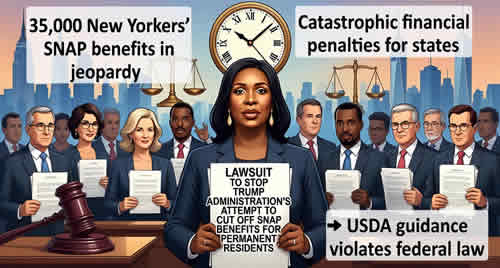
New York City is debating a housing bill that sounds technical but could seriously change how multifamily buildings are bought and sold.
It’s called the Community Opportunity to Purchase Act, or COPA, and it’s City Council bill Intro 902. New York City Council+1
Supporters say it’s a crucial tool to save affordable housing. Critics say it’s a slow-motion takeover of the housing market by City Hall and politically connected nonprofits. Let’s walk through what the bill actually does, how it would work in practice, and what we can realistically expect if it passes.
1. What COPA Would Do in One Sentence
COPA would give qualified nonprofits and community land trusts the first chance to buy most multifamily buildings (3+ units) when an owner decides to sell, plus extra time to match any private buyer’s offer — with fines up to $30,000 if owners don’t follow the rules. New York City Council+1
That’s it in plain English. The entire fight is really about who gets first shot at buying a building, and how much red tape comes with that.
2. How the COPA Process Would Work, Step by Step
Here’s the basic workflow, based on the bill text on the Council’s Legistar site and summary pages. New York City Council+2Intro NYC+2
- Owner decides to sell a building with 3 or more apartments.
This can be a small walk-up, a mid-size rental, or a larger property — as long as it has at least three residential units (with some technical exceptions). - Mandatory notice to the city and nonprofits.
Before accepting offers, the owner must send a “notice of sale” to:- the Department of Housing Preservation and Development (HPD), and
- a city-maintained list of “qualified entities” (nonprofits, community land trusts, etc.).
- Nonprofits get the “first opportunity to purchase.”
- They have 60 days to say they’re interested.
- Then up to 120 days to submit an offer.
- During this window, the owner is not allowed to accept other offers. New York City Council
- If a private buyer appears, nonprofits can still match.
Suppose a private investor makes a “bona fide” offer later in the process. The owner has to notify HPD and the nonprofits again. Under COPA, the nonprofits get another window (up to 120 days) to come in and match the same price and terms. New York City Council+1 - Penalties for skipping the process.
If an owner just tries to sell quietly and ignore COPA, the city can seek:- civil penalties up to $30,000, and
- a court order to unwind or block the sale. New York Post+1
So in practice, COPA doesn’t let nonprofits buy buildings at a discount — they still have to pay market prices — but it reorders the line so they get:
- first look,
- first offer,
- and a last-minute right to match.
3. Where the Idea Comes From: D.C. and San Francisco
Supporters are very open about the fact COPA is modeled on similar laws elsewhere:
- Washington, D.C. – TOPA (Tenant Opportunity to Purchase Act)
TOPA gives tenants (or developers they partner with) the chance to buy their building or assign that right when the landlord sells. Studies funded by D.C. and advocacy groups estimate over 16,000 affordable units were preserved or created between 2006 and 2020 under TOPA. Housing Alliance of Pennsylvania+1 - San Francisco – COPA
Since 2019, San Francisco has given nonprofits a first right of offer and first refusal to buy most multifamily buildings (3+ units). The goal is to prevent displacement and keep buildings permanently affordable. City and County of San Francisco+2SFMOHCD+2
New York’s bill is explicitly pitched as doing the same thing: letting mission-driven nonprofits buy at-risk buildings before “speculators swoop in.” City & State New York+1
4. Who’s Pushing COPA, and What They Say It Will Do
The main political sponsor is Council Member Sandy Nurse, who introduced Intro 902 in May 2024. New York City Council+1
Key advocacy groups backing COPA include New Economy Project, the NYC Community Land Initiative, and a broader “Community Land Act” coalition:
- They argue that as soon as buildings go on the market, private equity funds and large investors often outbid everyone else, then:
- raise rents,
- push out lower-income tenants,
- or reposition the building up-market. New Economy NYC+2New Economy NYC+2
- COPA, in their view, would:
- “level the playing field” so nonprofits can compete for buildings;
- help preserve existing affordable units rather than just building new ones;
- create more tenant- and community-controlled housing via land trusts and co-ops. New Economy NYC+2New Economy NYC+2
By November 2025, New Economy Project said COPA had reached supermajority support in the Council, enough to potentially override a mayoral veto if everyone stayed on board. New Economy NYC
5. Why Critics Are Alarmed
Opposition is coming from small landlord groups, real-estate trade associations, and several law firms that advise owners and lenders. Their concerns fall into a few buckets.
a) Time and uncertainty
Legal memos from firms like Belkin Burden Goldman and Holland & Knight highlight how COPA could stretch a normal sale into a 6–12-month saga of notices, waiting periods, and possible nonprofit match offers. Belkin · Burden · Goldman, LLP+1
Their arguments:
- Financing windows can close. Lenders don’t like deals that might sit for half a year without clarity.
- 1031 exchanges become risky. Owners relying on time-sensitive tax-deferred exchanges may not be able to meet federal deadlines if they’re stuck waiting out COPA timelines. Holland & Knight
- Buyers may just give up on NYC. If investors fear their offer will be used as free price discovery for nonprofits that can later match it, they may look to other markets.
b) Impact on values and tax revenue
Some analyses warn that if buildings are harder to sell, their market value will fall — not necessarily because nonprofits pay less, but because:
- fewer buyers are willing to deal with the red tape, and
- everyone demands a “COPA discount” for the extra risk. Belkin · Burden · Goldman, LLP+1
Holland & Knight, for example, argues Intro 902 could “dramatically decrease sales of multifamily buildings” and reduce the billions NYC collects in property and mortgage recording taxes, with little evidence it will create new units. Holland & Knight
c) Tilt toward politically connected nonprofits
Critics also point out that COPA doesn’t give tenants themselves the first right — it gives it to “qualified entities” certified by the city, mostly nonprofits and land trusts. New York City Council+1
That raises questions:
- Who gets on the list and who doesn’t?
- Will the organizations with better political connections see more deals?
- Do these entities have the capacity and funding to close purchases at scale, or will many buildings just sit in limbo?
The New York Post, in a highly charged editorial, goes much further — calling COPA a step toward “communist dystopia” and “Stalinesque” control over private sales. New York Post+1
That’s clearly rhetorical overkill, but it reflects a real anxiety in parts of the landlord and business community: that City Hall is inserting itself directly into who gets to buy what, and when.
6. What We Can Learn from D.C. and San Francisco
The honest answer is that both sides can point to evidence.
Evidence that these laws do preserve housing
- In Washington, D.C., research funded by the city and summarized by PolicyLink and others estimates that 16,000+ affordable units were created or preserved through TOPA between 2006 and 2020, plus thousands more units where tenants used TOPA negotiations to secure repairs and affordability guarantees even if they didn’t buy. PolicyLink+2LISC+2
- In San Francisco, COPA has helped nonprofits acquire and preserve hundreds of units since 2019, using a similar first-right-of-offer structure for 3+ unit buildings. Shelterforce+2Housing Alliance of Pennsylvania+2
So, if your only question is “Can these laws preserve some buildings as permanently affordable?” the answer is yes — they can.
Evidence that these laws create friction and backlash
At the same time:
- D.C. is now scaling back TOPA rights for small properties (2–4 units), after years of complaints from small landlords that the process was too complicated and open to abuse. The Washington Post+2The Washington Post+2
- Legal and industry commentary in both cities is full of examples where deals fell apart, financing was delayed, or owners avoided selling because they didn’t want to navigate the process. K&L Gates+2Hanson Bridgett LLP+2
So, the track record suggests something like this:
These laws do help preserve some affordable housing stock —
but they also slow and complicate transactions, and over time, politicians feel pressure to tweak or partially roll them back.
NYC is essentially jumping into a policy experiment that has already shown both benefits and costs elsewhere.
7. Likely Real-World Effects in New York
Putting it all together, what’s most likely to happen if COPA passes in roughly its current form?
- More power for City Hall–approved nonprofits.
They will get a pipeline of potential acquisitions, often with public subsidy behind them. That’s by design. - Slower, more complex deals for multifamily buildings.
Sellers and buyers will need lawyers who understand COPA, and timelines will stretch. Some deals that would have happened simply won’t. - Upward pressure on prices for “clean” assets, and discounting on COPA-constrained assets.
- Buildings not covered by COPA (or where obligations are waived) could become more attractive, bidding prices up.
- Buildings squarely under COPA may trade at a discount to compensate for extra risk and time — or not trade at all.
- Uneven impact by size and sophistication of owner.
- Large institutional players may treat COPA as just another compliance cost.
- Small landlords and families who own one or two buildings are the most likely to feel overwhelmed or pushed out.
- Real, but limited, gains in nonprofit-owned affordable housing.
If D.C. and San Francisco are any guide, COPA will help nonprofits save some buildings — but not remotely enough to “solve” the housing crisis on its own. Shelterforce+2PolicyLink+2
8. The Bottom Line
COPA is not literally a ban on private property, and it doesn’t let nonprofits seize buildings at cut-rate prices. It’s a procedural power shift:
- away from fast, bilateral deals between owner and buyer,
- toward a system where city-approved nonprofits get the first and last word on many sales.
Whether you see that as necessary protection in an overheated market or a dangerous politicization of transactions depends on your starting values:
- Do you think the housing crisis is mainly a failure of markets, or a failure of public policy and supply?
- Do you trust nonprofits, backed by City Hall, to manage a growing chunk of the housing stock better than private owners?
- And how much extra bureaucracy are you willing to tolerate in exchange for preserving some buildings as permanently affordable?
What’s clear from the evidence is that COPA-type laws are not cost-free. They can preserve units and empower community buyers — but they also bring delay, compliance costs, and the risk that only those nonprofits and intermediaries with the best political connections will really benefit.
New York City is now deciding if that trade-off is worth it.










